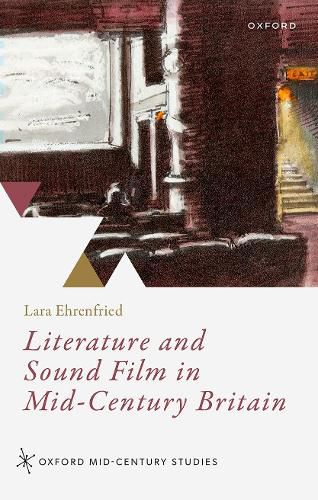Readings Newsletter
Become a Readings Member to make your shopping experience even easier.
Sign in or sign up for free!
You’re not far away from qualifying for FREE standard shipping within Australia
You’ve qualified for FREE standard shipping within Australia
The cart is loading…






What happened to cinema and literature when synchronized sound was introduced to the film industry in the late 1920s? Literature and Sound Film in Mid-Century Britain studies the paths of film and text following this event. It asks how British cinema responded to the introduction of sound and how mid-century literature took up the challenge of the synchronized, audio-visual entertainment experience offered by this media change. By examining the technological and industrial histories of film and its narrative strategies and by drawing links to twentieth-century literary culture, this study offers a new way of approaching mid-century writing and its media ecology. Developing innovative, audio-visual close readings, this book offers a multi-sensory, multi-media approach that reframes the relationships between cinema and literature in the twentieth century. The study addresses a wide range of film genres, such as musical film, screwball comedy, the thriller, documentary, and melodrama alongside the writings of a large group of authors including Elizabeth Bowen, Patrick Hamilton, Evelyn Waugh, Lewis Grassic Gibbon, Henry Green, Jean Rhys, Ivy Compton-Burnett, and Eric Ambler. It covers an expansive range of films and texts of the 1930s and 1940s and invites readers to comprehensively rethink mid-century media culture by arguing for a growing synergy of film and text.
$9.00 standard shipping within Australia
FREE standard shipping within Australia for orders over $100.00
Express & International shipping calculated at checkout
What happened to cinema and literature when synchronized sound was introduced to the film industry in the late 1920s? Literature and Sound Film in Mid-Century Britain studies the paths of film and text following this event. It asks how British cinema responded to the introduction of sound and how mid-century literature took up the challenge of the synchronized, audio-visual entertainment experience offered by this media change. By examining the technological and industrial histories of film and its narrative strategies and by drawing links to twentieth-century literary culture, this study offers a new way of approaching mid-century writing and its media ecology. Developing innovative, audio-visual close readings, this book offers a multi-sensory, multi-media approach that reframes the relationships between cinema and literature in the twentieth century. The study addresses a wide range of film genres, such as musical film, screwball comedy, the thriller, documentary, and melodrama alongside the writings of a large group of authors including Elizabeth Bowen, Patrick Hamilton, Evelyn Waugh, Lewis Grassic Gibbon, Henry Green, Jean Rhys, Ivy Compton-Burnett, and Eric Ambler. It covers an expansive range of films and texts of the 1930s and 1940s and invites readers to comprehensively rethink mid-century media culture by arguing for a growing synergy of film and text.